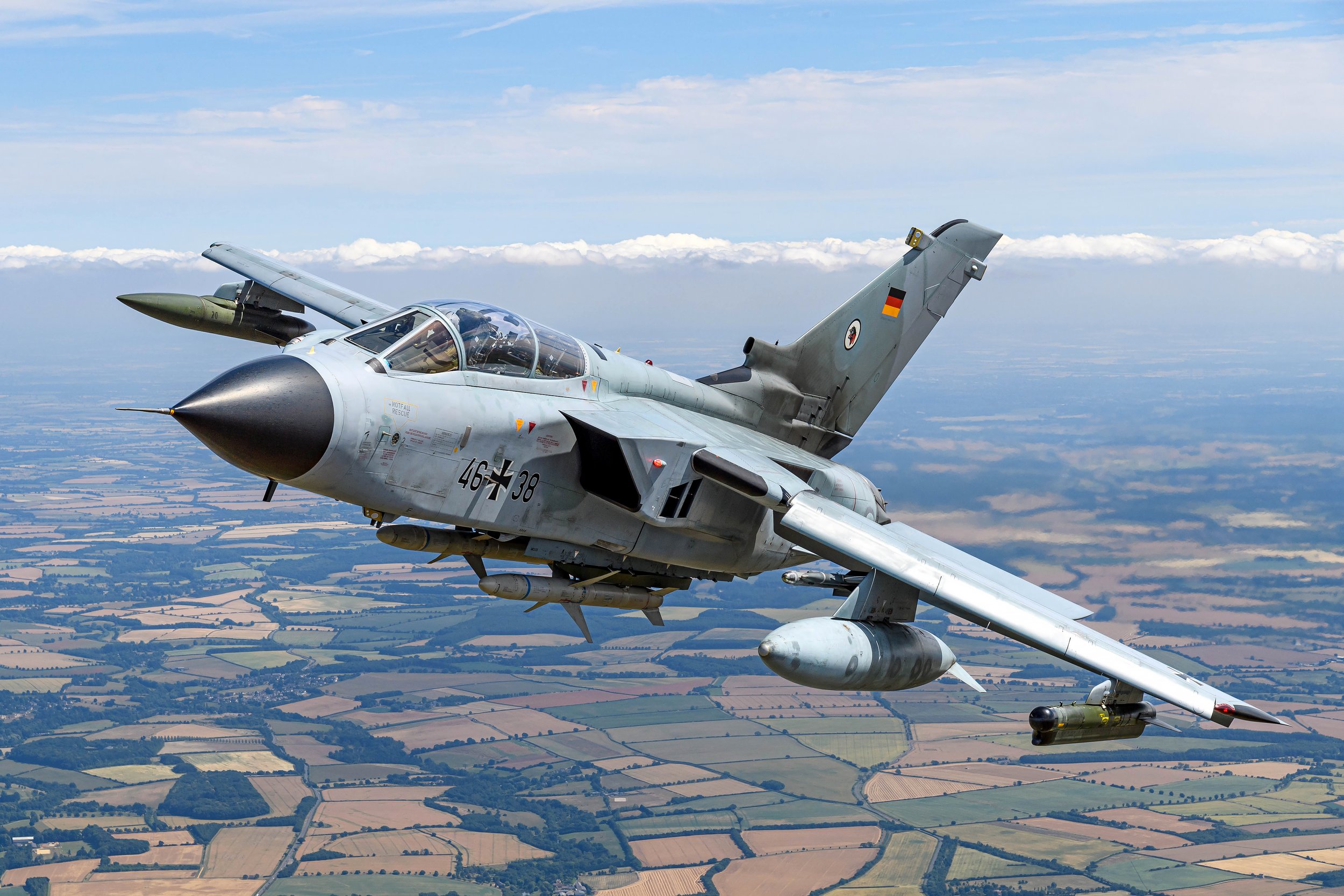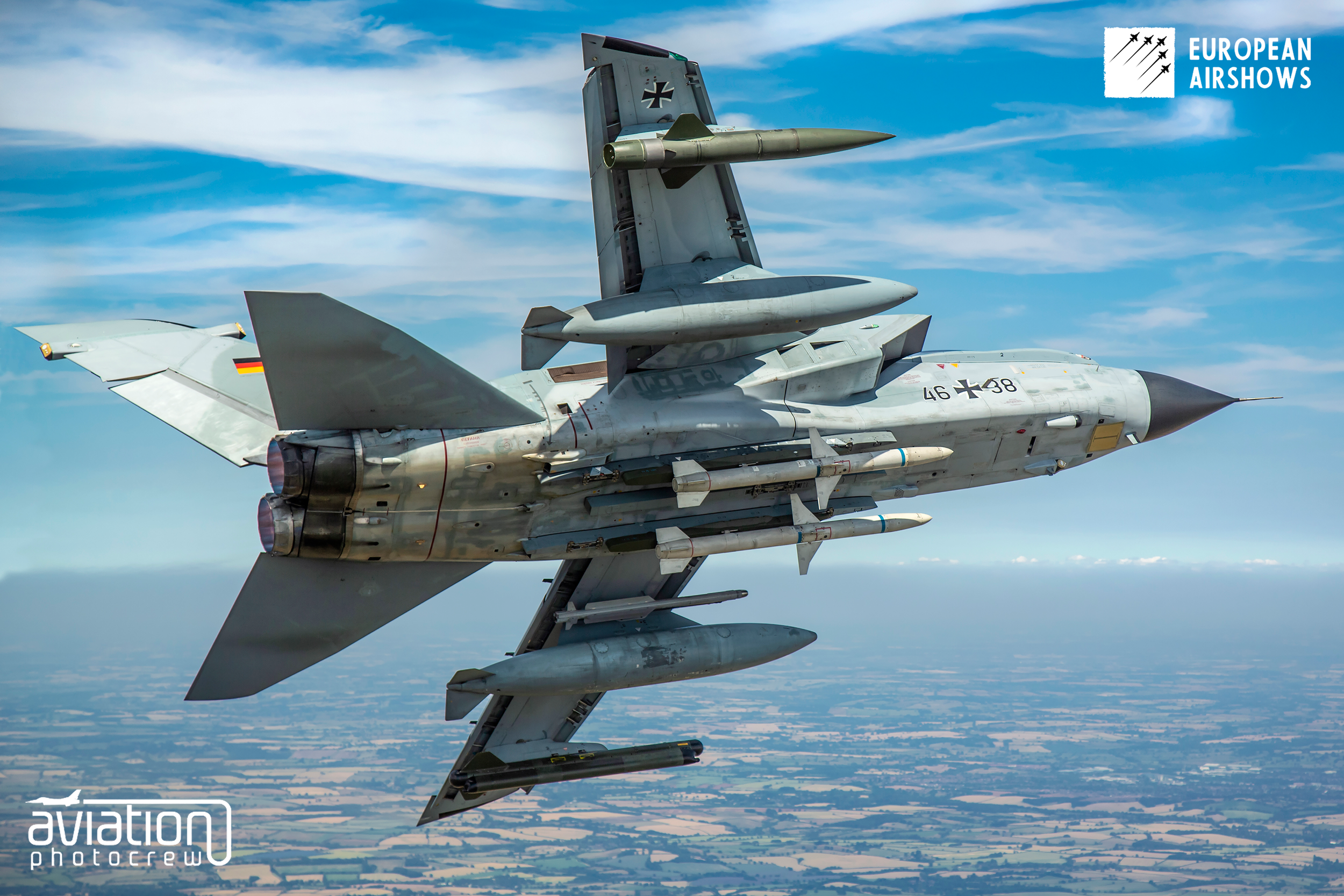
August 14 / Panavia Tornado first flight
First Flight 14 August 1974
Panavia Tornado
The Panavia Tornado is a remarkable example of European collaboration in aerospace engineering, representing a significant milestone in the history of military aviation. Its development and operational history span several decades, reflecting the changing dynamics of warfare and technological advancements. The Tornado’s story begins in the late 1960s and early 1970s, a period marked by the Cold War and the pressing need for versatile and advanced military aircraft.
The genesis of the Tornado can be traced back to the formation of Panavia Aircraft GmbH, a tri-national consortium established in 1969. This consortium was a joint venture between British Aircraft Corporation (BAC) of the United Kingdom, Messerschmitt-Bölkow-Blohm (MBB) of West Germany, and Aeritalia of Italy. The collaboration aimed to create a multi-role combat aircraft that could meet the diverse operational requirements of the Royal Air Force (RAF), the Luftwaffe, and the Italian Air Force.
The design requirements for the Tornado were ambitious. The aircraft needed to perform a wide range of missions, including low-level penetration, reconnaissance, air superiority, and maritime strike. This necessitated a versatile design, capable of adapting to different combat scenarios. The result was a twin-engine, variable-sweep wing aircraft, which allowed for both high-speed performance and excellent low-speed handling characteristics. The variable-sweep wing design was particularly innovative, enabling the Tornado to adjust its wing configuration for optimal performance during different phases of flight.
The Tornado’s development phase was marked by extensive testing and refinement. The first prototype, designated as the P.01, took to the skies on August 14, 1974. This maiden flight marked the beginning of a rigorous testing program, which sought to validate the aircraft’s design and performance. Over the next few years, numerous prototypes and pre-production models were built and tested, leading to the eventual approval for full-scale production.
The Tornado entered operational service in the early 1980s, with the RAF, Luftwaffe, and Italian Air Force receiving their first deliveries. The aircraft was produced in three primary variants: the Tornado IDS (Interdictor/Strike), the Tornado ADV (Air Defence Variant), and the Tornado ECR (Electronic Combat/Reconnaissance). Each variant was tailored to specific mission requirements, enhancing the Tornado’s versatility and operational effectiveness.
The Tornado IDS was the backbone of the Tornado fleet, designed for low-level penetration and strike missions. It was equipped with advanced avionics, terrain-following radar, and a wide array of weaponry, including precision-guided munitions and nuclear weapons. The Tornado ADV, on the other hand, was developed as an air defence interceptor, featuring a longer fuselage, more powerful engines, and advanced radar systems. The Tornado ECR was specialized for electronic warfare and reconnaissance, equipped with sensors and jamming equipment to suppress enemy air defences.
Throughout its service life, the Tornado proved its worth in various conflicts and operational scenarios. One of its most notable deployments was during the Gulf War in 1991. Tornado aircraft from the RAF, Luftwaffe, and Italian Air Force played a crucial role in the coalition’s air campaign against Iraq. The Tornado IDS conducted low-level bombing missions, targeting key infrastructure and military installations, while the Tornado ADV provided air cover and interception capabilities. The Gulf War highlighted the Tornado’s robustness, adaptability, and combat effectiveness, earning it a formidable reputation.
In addition to its combat roles, the Tornado also played a significant part in NATO’s operations in the Balkans during the 1990s. The aircraft participated in air strikes and reconnaissance missions, contributing to the alliance’s efforts to stabilize the region. The Tornado’s ability to operate in diverse environments and its compatibility with various weapon systems made it an invaluable asset for NATO forces.
The Tornado’s operational history is also marked by continuous upgrades and modernization programs. These upgrades aimed to enhance the aircraft’s avionics, weapon systems, and overall performance, ensuring that it remained relevant in the face of evolving threats. Notable upgrade programs included the RAF’s GR4 upgrade, which introduced advanced targeting pods, improved navigation systems, and enhanced precision strike capabilities.
Despite its successes, the Tornado’s service life began to wind down in the early 21st century, as newer and more advanced aircraft entered service. The Eurofighter Typhoon, another product of European collaboration, gradually replaced the Tornado in many of its roles. The RAF retired its last Tornado aircraft in 2019, marking the end of an era for this iconic aircraft.
The Panavia Tornado stands as a testament to international cooperation and engineering excellence. Its development, operational history, and continuous evolution reflect the dynamic nature of military aviation and the ever-changing demands of modern warfare. The Tornado’s legacy endures, not only in the annals of aviation history but also in the continued service of its variants and the lessons learned from its decades of operation.
Tornado Facts
Multi-National Crews: During its development and testing phases, the Tornado often had mixed-nationality crews. For example, it was not uncommon for a British pilot to fly with a German navigator or vice versa. This unique setup was a testament to the collaborative spirit of the Panavia consortium.
First Variable-Sweep Wing in Europe: While variable-sweep wing technology was not new, the Tornado was the first European aircraft to incorporate it. This design allowed the aircraft to change the angle of its wings in flight, optimizing performance for different speeds and mission profiles.
Advanced Terrain-Following Radar: The Tornado’s terrain-following radar was one of the most advanced of its time. This system enabled the aircraft to fly at extremely low altitudes, hugging the terrain to avoid radar detection and enemy defenses. It was a crucial feature for its low-level penetration missions.
Unique Engine Design: The Tornado is powered by two Turbo-Union RB199 engines, which were specially designed for the aircraft. These engines were a product of another international collaboration, involving Rolls-Royce, MTU Aero Engines, and FiatAvio. The engines provided a blend of high thrust and fuel efficiency, essential for the Tornado’s varied mission profiles.
Operational in Harsh Environments: The Tornado has been tested and operated in some of the harshest environments, from the freezing temperatures of Northern Europe to the scorching deserts of the Middle East. Its robust design and versatility allowed it to perform reliably in diverse and challenging conditions.
First Combat Use of ALARM Missile: The Tornado was the first aircraft to deploy the ALARM (Air-Launched Anti-Radiation Missile) in combat. This missile was designed to home in on enemy radar signals, making it an effective tool for suppressing enemy air defenses. The Tornado’s use of ALARM missiles during the Gulf War showcased its advanced electronic warfare capabilities.
Tornado’s Role in Nuclear Deterrence: Beyond conventional warfare, the Tornado played a significant role in NATO’s nuclear deterrence strategy. The aircraft was capable of carrying and delivering nuclear weapons, and its low-level penetration capabilities made it a formidable component of Europe’s nuclear defense posture during the Cold War.
Specialized Training Units: Given the complexity of the Tornado, specialized training units were established to prepare pilots and navigators. One notable example is the Tri-national Tornado Training Establishment (TTTE) at RAF Cottesmore, where British, German, and Italian crews trained together, fostering interoperability and mutual understanding.
Record-Breaking Sorties: During Operation Desert Storm, the Tornado was known for its high sortie rate. RAF Tornado squadrons flew numerous missions, often under extremely challenging conditions. The aircraft’s reliability and the crews’ dedication resulted in an impressive operational tempo, contributing significantly to the coalition’s air campaign.
Legacy of Innovation: The Tornado’s development and operational history have left a lasting legacy in terms of technological innovation. Many of the systems and design principles pioneered in the Tornado have influenced subsequent aircraft, including the Eurofighter Typhoon. The Tornado’s success demonstrated the potential of international collaboration in aerospace development, setting a precedent for future projects.































